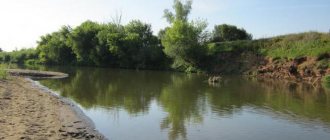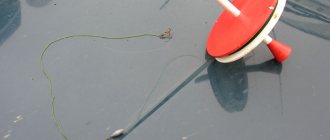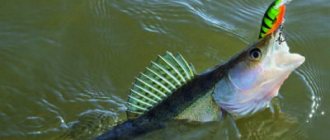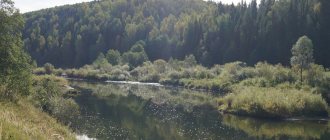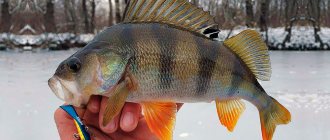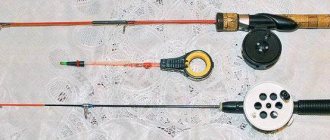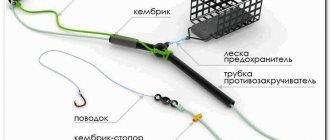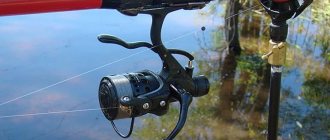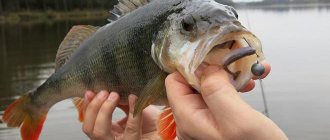Syas is a medium-length river flowing in the Leningrad and Novgorod regions of the Russian Federation. It originates in the swamps of the western slope of the Valdai Upland. Further it flows through the Ladoga Lowland. The direction of the current is from southeast to northwest. Flows into Lake Ladoga. The river belongs to the river basin. Not you.
The Syas River (Leningrad Region) has nine tributaries: 5 right and 4 left. The river bed is crossed by four bridges (two railway and two road).
Geography of the river
The Syas River has a moderate length - 260 km. The total area of the basin is 7330 km2. Its upper part is located in the Novgorod region, but the larger part is located on the territory of the Leningrad region. Syasya has a mixed diet, mostly snow. The average annual flow volume at the mouth is 53 m3/sec. From November to April the surface of the water is covered with ice.
The Syas flows through the territory of the Russian Plain. At the source there is the Valdai Upland, and further down the riverbed there is the Priilmenskaya Lowland. The relief on the Valdai Upland is hilly-ridge, moraine. As for the Priilmenskaya lowland, it is flat, low-lying, with many swamps.

The area is covered with taiga forests in which pine, birch, oak, spruce, and rowan trees grow.
The composition of river water is determined by the nature of the bottom substrate. It contains a lot of iron oxide, so river water is saturated with it and has a red-brown tint. The level of pollution is moderate, classified as third class.
Geographical information
The Syas River flows from southeast to northwest. It originates on the Valdai Hills, 4 km southeast of the village of Akulovo, Lyubitinsky district, Novgorod region. It flows into the Volkhov Bay of Lake Ladoga, 3 km from the town of Syasstroy, Volkhov district, Leningrad region.
The length of the Syas River is 260 km. The drainage basin area is 7330 km². The water flow in the river is 53 m³/s 27 km from the mouth. The height of the source is more than 120 m. The height at the mouth is 4.3 m. The width in the middle part of the channel is from 40 m to 70 m, and at the mouth up to 170 m. The feeding of the Syas is mixed, with a predominance of snow. The river freezes in November, sometimes in December - January, and opens in April.
Due to the fact that the river bottom is a substrate rich in iron oxide, the water in the Syas River has a red-brown tint. The Syas River is moderately polluted (class 3).
The largest left tributaries of the river: Moshenka, Upper Amosovka, Nizhnyaya Amosovka, Mezhnik Stream, Olkhovka, Morozovka, Klimenka, Lunenka, Selivanovsky Stream, Opochnya, Syretskaya, Lynna. The largest right tributaries of the river: Shuya, Tala, Krapivna, Kurishna, Korskoy Stream, Olkhovik Stream, Volozhba, Kamenka, Selovsky Stream, Tikhvinka, Valya, Kusega, Suzna, Valgomka.
Human activity
The population in the river basin is not large. On the river itself is the city of Syasstroy. Within its basin are the cities of Pikalevo, Tikhvin, and Boksitogorsk. And also the villages of Kolchanovo and Nebolchi. It is assumed that in the past one of the variants of the Volga-Baltic route ran along the riverbed.
Anthropogenic development of the river basin is small. A railway was laid in the upper part of the riverbed near it. Only two railway and two road bridges were built across the river along its entire length.
Fishing and recreation
The river is used for swimming, fishing, boating, and rafting. Cloudberries are collected in the swamps, and mushrooms are collected in the forest. Rafting trips last for several days.
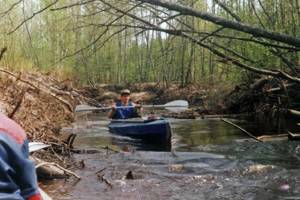
This region also has its own local attraction. This is a cave that runs through white sandstone and contains many fossils. It is located in the village of Rebrovo, Volkhov district. At the mouth of the river, the Church of the Assumption of the Blessed Virgin Mary was built, located near Syasstroy. Other attractions can be found in the upper reaches of the river. Here you can see ancient villages, the peculiarity of which are Russian and Vepsian huts, distinguished by their monumentality. Along the banks of the river you can see mounds erected by tribes who lived in the distant past.
There are practically no reviews about fishing on the Syas River. However, judging by the forums, fishing conditions there are good. Local fishermen write that you can go fishing anywhere. It’s more convenient to fish from the shore with a fishing rod or spinning rod on the New Canal.
Fishing and recreation
The river is used for swimming, fishing, boating, and rafting. Cloudberries are collected in the swamps, and leech meat is collected in the forests. Rafting trips last for several days.
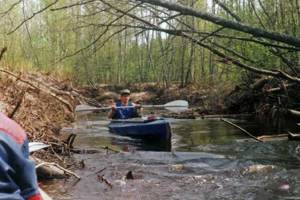
This region also has its own local dignity. This is a cave passing through white sandstone, in which it is not forbidden to find many fossils. It is located in the village of Rebrovo, Volkhov district. In the lower reaches of the river, the Church of the Assumption of the Blessed Virgin Mary was built, located a few steps from Syasstroy. Other attractions can be found in the upper reaches of the river. After this, you can see ancient villages, the peculiarity of which are Russian and Vepsian huts, distinguished by their monumentality. Beyond the banks of the river you can see mounds erected by tribes who lived in the distant past.
There are practically no reviews about fishing in the Syas River. However, judging by the forums, the conditions for fishing there are good. Local fishermen write as if you can go fishing anywhere. It’s more convenient to fish from the shore with a fishing rod or spinning rod on the New Canal.
Features of fishing on the Syas River
In the river you can find both sedentary and migratory fish species. The latter penetrate this reservoir from Lake Ladoga. They swim here during seasonal migrations. A convenient place for fishing is the Kolchanovo area. Here the river has a gentle current and the terrain is flat. The width of the reservoir in this area is 70-100 meters. The depth does not exceed 5-6 meters. The bottom is quite flat, with a smooth change in depth. It has a silty or sandy structure, and in some places it is rocky. Aquatic vegetation is widespread near the shore. The banks are flat. Willows, birches and bushes grow. There are quite good approaches to the water, but in some places it is better to use wading boots.
Spinning fishing is common here. They use different baits. Small spinners or microjigs are useful for catching perch. To catch pike or pike perch, jig baits and sometimes oscillating spoons are used. For burbot, bottom tackle with live bait and other baits are used. By the end of autumn, before the start of freeze-up, when this predator becomes especially active, donks are placed.
On reconnaissance to the Syasya River
On reconnaissance to the Syasya River
At 16:00 on June 25, Mikhalych and I left the Ring Road for the Murmansk Highway. Already on the move we decided which river we were going to. We considered 2 options: Volkhov or Syas. Syasya was unanimously chosen. I had never been there before.
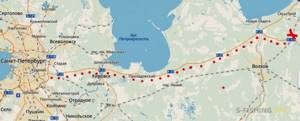
In the afternoon, at the “Cool Place” store on the Polyustrovsky market, we found ourselves on a “lunch” break - “everyone had gone to the front,” and I found myself without the “Rybachella” bait. Therefore, I had to remember the past and, running into one of the shops on the highway, bought ingredients for the “Ambulance” bait: wheat grain and unrefined sunflower oil. At 20 o'clock Mikhalych confidently brought us to the railway bridges across Syas near the village of Kolchanovo.
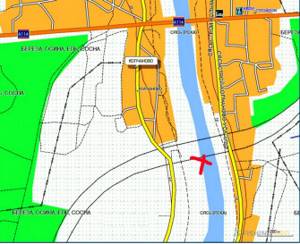
The builders there created a convenient parking area, and we parked the car on it almost right next to the water.
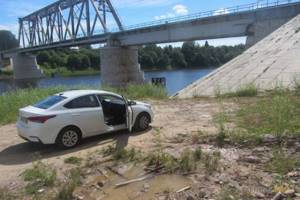
We started fishing on the western bank above the railway bridges. Mikhalych-hurriedly, as always, was the first to cast the donk and immediately fished out a bream a little bigger than his palm. That evening the white fish did not bite anymore. I first set up a tent, laid out a rug and a sleeping bag in it. I prepared the “first aid” bait by mixing wheat cereal with unrefined sunflower oil in a yogurt bottle. After letting the oil soak into the cereal for 10 minutes, I began to fill the feeder with this mixture.

Cereals swell slowly in cold water and give off the aroma of oil for a long time. The bait turns out to be “long-lasting”! When I finished with the tent and set up my donks, the ruffs started biting for both of us. One of them surprised Mikhalych with its impressive size. The rest of the ruffs were modest. One of the “modest” Mikhalych baited a donka in the hope of pike perch: in the morning it turned out that it was in vain! At midnight we left fishing and went to bed. Mikhalych suffered in the car until three o’clock, but was still unable to fall asleep. Therefore, he again came to the fishing rods and began to mock me: out of boredom, he told me what kind of roaches and snouts were biting him. By 4 a.m. a local guy showed up on a moped, and the two of them started having more fun. All their chatter was terribly disturbing to me from sleeping, but... Mikhalych said: “You came for fishing, you don’t need to sleep!” My patience ran out by 7 am. I got up, took off the ruffs I had caught during the night from the fishing rods and began trying to shine with different spinning rods - I’m going fishing in Karelia and choosing which spinning rods to take with me. Tiny bluelips pecked at the turntable. There were several outbreaks of larger predators: they ate the perch. Not a single pike or pike perch coveted the wobblers. At half past eight, the bite suddenly began for all the donkeys: the bream woke up and began to have breakfast. The largest one (900 grams) was caught by Mikhalych.
River landscapes
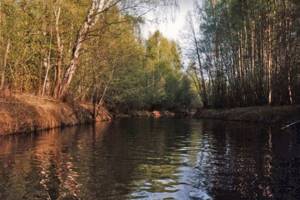
The Syas River flows through forests and is quite picturesque. In the upper reaches the current is fast and rapids, and the river is shallow and narrow. This part is more suitable for kayaking enthusiasts. Deciduous and mixed forests grow along the banks. Below the riverbed the flow is calm and here the river is very picturesque. Some photographs of the shores resemble paintings by famous Russian artists.
What kind of fish is found in the Syasya River
Different types of fish live in the reservoir. Here you can find perch, pike, bream, roach, crucian carp, dace, ruffe, carp, burbot, pike perch, ide, podust, chub, bream, tench, as well as rudd, silver bream, bleak, and verkhovka.
The river is used for swimming, fishing, boating, and rafting. Cloudberries are collected in the swamps, and mushrooms are collected in the forest. Rafting trips last for several days.
This region also has its own local attraction. This is a cave running through white sandstone where many fossils can be found. It is located in the village of Rebrovo, Volkhov district. At the mouth of the river, the Church of the Assumption of the Blessed Virgin Mary was built, located near Syasstroy. Other attractions can be found in the upper reaches of the river.
There are practically no reviews about fishing on the Syas River. However, judging by the forums, fishing conditions there are good. Local fishermen write that you can go fishing anywhere. It’s more convenient to fish from the shore with a fishing rod or spinning rod on the New Canal.
In the river you can find both sedentary and migratory fish species. The latter penetrate this reservoir from Lake Ladoga. They swim here during seasonal migrations. A convenient place for fishing is the Kolchanovo area. Here the river has a gentle current and the terrain is flat. The width of the reservoir in this area is 70-100 meters.
The depth does not exceed 5-6 meters. The bottom is quite flat, with a smooth change in depth. It has a silty or sandy structure, and in some places it is rocky. Aquatic vegetation is widespread near the shore. The banks are flat. Willows, birches and bushes grow. There are quite good approaches to the water, but in some places it is better to use wading boots.
Spinning fishing is common here. They use different baits. Small spinners or microjigs are useful for catching perch. To catch pike or pike perch, jig baits and sometimes oscillating spoons are used. For burbot, bottom tackle with live bait and other baits are used. By the end of autumn, before the start of freeze-up, when this predator becomes especially active, donks are placed.
